Attack! With the swiftness and coy of a bird sweeping down upon its prey,
the so-called reformers of the 1500s charged forward in an effort to strike down
the Catholic Church. Their game plan went right to the top, seeking to take out
the Church’s centerpiece, the King of kings, Jesus Christ in the Eucharist; and
the guardians and dispensers of the hidden Jesus, the bishops and priests. In
this spiritual chess game, the Masters of mischief included Luther and Bucer in
Germany, Calvin and Zwingli in Switzerland, Cranmer and Cromwell in England, and
other lesser known pawns, who openly attacked belief in the Mystical Body, the
Catholic Church and its sacramental system, especially the Eucharistic Jesus.
The masterminds knew that the Church produces the Eucharist, but that the
Eucharist also produces the Church in a very special way. Therefore to destroy
belief in the Eucharist, is to destroy the Catholic Church. They thought it was
high time for their reformed religions to take over, but how to capture the
hearts and minds of those who believed in that centerpiece, the hidden Jesus in
the Eucharist? They knew that if the belief in the Eucharistic Jesus would fall,
all of Catholicism would fall.
Their game plan was clear; with fiery words, Martin Bucer, in England at
the invitation of Cranmer to help spread the new doctrine, proclaimed in word
the following sentiments of the Masters:
“Every superstition of
the Roman Antichrist is to be detested ... I have no doubt that this usage of
not putting these sacraments in the hands of the faithful has been introduced
out of a double superstition; firstly, the false honour they wished to show
this sacrament, and secondly the wicked arrogance of priests claiming greater
holiness than that of the people of Christ, by virtue of the oil of
consecration.
“I should wish that pastors and teachers of the people should be
commanded that each is faithfully to teach the people that it is superstitious
and wicked to think ... that the hands of the ministers are holier than the
hands of the laity; so that it would be wicked, or less fitting, as was
formerly wrongly believed by the ordinary folk, for the laity to receive these
sacraments in the hand; and therefore that the indications of this wicked
belief be removed–as that the ministers may handle the sacraments, but not
allow the laity to do so, and instead put the sacraments into the mouth–which
is not only foreign to what was instituted by the Lord but offensive to human
reason.
“In this way good men will be easily brought to the point of all
receiving the sacred symbols in the hand...”
Needless to say,
Cranmer’s new 1552 English Communion service devalued the priest and the
Eucharist, implementing, among other practices, Communion in the hand. Earlier,
Luther had started the practice of Communion in the hand, calling the Catholic
belief a “subtle sophistry” and the Catholic Mass as “the greatest and most
terrible abomination.” At this time, Cranmer’s English Communion service didn’t
have the Catholic belief either, as he would say himself, “Christ is not
received with the mouth but with the heart and entereth by faith.” This was the
similar doctrine of Zwingli and Calvin and many other so-called reformers
throughout Europe as well. Therefore, to promote their own doctrine, the people
of the new religions were to become their own minister of the Eucharist. Surely,
breaking the long-standing tradition of receiving Jesus from a priest on the
tongue would help break down the sensibilities and beliefs of the “ordinary
folk.” The like occurred in Germany, Switzerland, Holland and other countries
throughout Europe. To the Protestant mind the Eucharist was fast becoming just
common bread.
Over 400 years later, the crazy 1960s rolled in, and the spirit of Bucer
with it: Déjà Vu, Back to the Past: Part II. Back to Europe, where this
time it is in Holland where the rebellion to Church authority and practice is on
the march again. This time the masterminds of rebellion stay within the visible
structure of the Church, and proceed with calculated acts of defiance of
mandatory liturgical norms, becoming quite successful. Using “ordinary folk” as
their springboard, they convinced them, often under false obedience, to
“following their leaders wherever they may go,” even outside obedience to Rome.
One cannot but hear the words of Bucer echoing, “In that way good men will
easily be brought to the point of all receiving the sacred symbols in the
hand...” Others, succumbing out of weakness, following the motto “see no evil,
hear no evil,” and following the pied piper away from the wisdom of Holy Mother
Church. Here, one cannot help but be reminded of the words of St. John Bosco,
“The power of evil men lives on the cowardice of the good.” Despite being
strictly forbidden by Church law, being defined as a grievous offense and
mortally wounding, the practice of Communion in the hand is promoted, the wounds
of Christ are opened anew, and like a cancer, is spread throughout Holland,
Belgium, Germany and France. A blitzkrieg of defiance!
Hundreds upon hundreds of years of Catholic teaching on the dignity and the
manner of proper respect that needs to be shown toward the Eucharist is in
peril. One just has to look back in history to the 1500s to realize that they
were promoting the Protestant practice. This practice was one of the issues the
Church responded to in the Council of Trent (1545-1563). In clear terms, the
Council declared that receiving Holy Communion from the hands of a priest
only was an Apostolic tradition. We only have to read from the catechism of
that Council of Trent to see the mind of the Church:
“It must be taught,
then, that to priests alone has been given power to consecrate and administer
to the faithful, the Holy Eucharist. That this has been the unvarying practice
of the Church, that the faithful should receive the Sacrament from the
priests, and that the officiating priests should communicate themselves, has
been explained by the Council of Trent, which has also shown that this
practice, as having proceeded from Apostolic tradition, is to be religiously
retained...”
These words were
nothing new, but only reechoing the practice that had developed in the Church
under the inspiration of the Holy Spirit. For, in the 1200s St. Thomas, in his
marvelous work, Summa Theologica, pronounced the same: that it was a
priest’s job to distribute the Eucharist. St. Thomas states:
“The dispensing of
Christ’s Body belongs to the priest for three reasons. First, because he
consecrates in the person of Christ. But as Christ consecrated His Body at the
Supper, so also He gave It to others to be partaken of by them. Accordingly,
as the consecration of Christ’s Body belongs to the priest, so likewise does
the dispensing belong to him. Secondly, because the priest is the appointed
intermediary between God and the people, hence as it belongs to him to deliver
the consecrated gifts of the people. Thirdly, because out of reverence towards
this Sacrament, nothing touches It but what is consecrated, and likewise the
priest’s hands for touching this Sacrament. Hence, it is not lawful for anyone
else to touch It, except from necessity, for instance, if It were to fall upon
the ground or else in some other case of urgency.” (Summa Theologica)
The little poor man
of Assisi, St. Francis, in his simplicity summed up the Catholic belief, “And I
do this because, here on earth, I see nothing of the Son of the Highest God,
except his most holy Body and Blood, which the priests receive and which only
they give to others.” And these solemn secrets I will honor and venerate
above everything and keep them in the most sacred places.” (Letter to the
Faithful)
We need to reflect here and realized that this profound theology of respect
towards the Eucharist that had developed and grown under the guidance of the
Holy Spirit from centuries upon centuries. In the early stages of development of
the Church, Communion in the hand was permitted but it led to so many abuses
that it had to be condemned. Like a child growing into manhood the Church had to
develop and come a long way.
As early as Pope St. Leo I (460-461), Communion on the tongue was in
current use. The holy Pope stated, “One receives in the mouth what one believes
by faith.” The great St. Gregory tells us in his dialogues (594-604) how Pope
St. Agapitus performed a miracle during the Mass after having introduced the
Body of our Lord into the mouth of a person: “When he placed the Lord’s Body in
his mouth, the tongue which had so long been speechless was loosed, all those
present were struck with wonder and wept for joy.” (Dialogue 3, 117) A
local council in Rouen, France in 650 condemned Communion in the hand: “Do not
put the Eucharist in the hands of any layman or laywoman but only in their
mouths.” In the 9th century, the Roman Ordo clearly admits to the fact of
Communion on the tongue as the normal practice.
Under the cloak that we are “gloriously returning to the spirit of ancient
times,” many modern innovators of the 60s sought to bring people to primitive
practices, as Communion in the hand. As this thought was already seeping into
the Church in the 1940s, the great Pope Pius XII reacted strongly against this
in his famous encyclical Mediator Dei (1947). In this document, he warned
against such people who attempt to undermine the faith under such a pretext,
saying such persons represent “a wicked movement that tends to paralyze the
sanctifying and salutary action by which the liturgy leads the children of
adoption on the path to their Heavenly Father.” Moreover, the Holy Father goes
on in this same document, “the desire to restore everything indiscriminately to
its ancient condition is neither wise nor praiseworthy. It would be wrong, for
example, to want the altar restored to its ancient form of a table ... and
pictures and statues excluded from our churches ... This attitude is an attempt
to revive the ‘archeologism’ ... which the Church ... has rightly condemned.”
If Pope Pius XII’s words were not enough, Cardinal Newman’s words should
stop any innovator in their tracks. In his book The Development of Christian
Doctrine he exclaimed that “a developed doctrine which reverses the course
of development which has proceeded it, is no true development but a corruption;
also that which is corrupt acts as an element of unhealthiness towards what is
sound.” Today, polls show that only 30% of U.S. Catholics believe in the
Church’s teaching on the Eucharist. THIRTY PERCENT! Did the practice of
Communion in the hand have anything to do with this loss of belief in the
Eucharist? Surely, Martin Bucer would like to have thought so.
Clearly, during the Vatican II Council, 1962-1965, there was no change in
the Church’s tradition of receiving on the tongue from a priest. This ancient
practice was retained as nothing was declared to the contrary. Most definitely,
if we truly followed Vatican II, there would be no Communion in the hand.
Furthermore, in this same time period, the Canon Law in use since 1917 declared,
“The priest alone is the ordinary Minister of Holy Communion. The deacon is the
extraordinary minister, but he must have the permission of the local Ordinary or
of the pastor, which may be given for grave reason, and may be legitimately
presumed in case of necessity.” (Canon 845) Additionally, the 1962 book The
Administration of the Sacraments, imprimatured by Cardinal Cushing, points
out that if a deacon gives out Holy Communion without permission under normal
circumstances he would be “sinning grievously.” With all of the Church’s might
against such a practice, one can only wonder in amazement how this practice of
Communion in the hand got its foothold today.
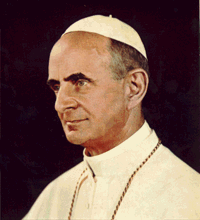 His Holiness Pope Paul VI saw the dangers of this rebellion of the 1960s
challenging him, and looked to the world’s bishops to support him. The Holy
Father sent out a questionnaire to the bishops of the world to see if they felt
as he did on this serious matter. The results that were in before March 12th of
1969 read: 567 bishops voting yes on Communion in the hand; 1,233 voting
no on Communion in the hand, 315 of those yes votes with reservation.
Great news for the Pope, as it was overwhelmingly rejected by majority of the
bishops. However, on the not so good side, the rebellious practice was growing
day by day–the spirit of Bucer was alive!
His Holiness Pope Paul VI saw the dangers of this rebellion of the 1960s
challenging him, and looked to the world’s bishops to support him. The Holy
Father sent out a questionnaire to the bishops of the world to see if they felt
as he did on this serious matter. The results that were in before March 12th of
1969 read: 567 bishops voting yes on Communion in the hand; 1,233 voting
no on Communion in the hand, 315 of those yes votes with reservation.
Great news for the Pope, as it was overwhelmingly rejected by majority of the
bishops. However, on the not so good side, the rebellious practice was growing
day by day–the spirit of Bucer was alive!
Feeling the pressure of the situation, and afraid of losing his hold on the
affair–which was clearly happening–Pope Paul VI sought to set things right by
bringing forth a new instruction, Memoriale Domini on May 29, 1969.
Bringing to light the bishops’ vote, the Holy Father’s instruction reads, “From
the responses it is thus clear that by far the greater number of bishops feel
that the present discipline should not be changed at all, indeed, that if
it were changed, this WOULD BE OFFENSIVE to the sensibilities and spiritual
appreciation of these bishops and of most of the faithful.” (emphasis added)
Further, showing how he himself feels, the noted document states, “the
Supreme Pontiff judged that the long-received manner of ministering Holy
Communion to the faithful SHOULD NOT BE CHANGED. The Apostolic See therefore
strongly urges bishops, priests and people to observe zealously this law.” (!)
Moreover, in this document, the Holy Father admits Communion in the hand is
an abuse! When talking about the practice, the document states, “In some
communities and localities this rite (of receiving Communion in the hands) has
even been performed WITHOUT OBTAINING THE PRIOR APPROVAL OF THE APOSTOLIC
SEE....” Bingo! Here is the admittance that Communion in the hand is truly an
abuse, and, by the way, is still objectively and grievously sinful at this time.
Before we go forward, let us ponder on the Scripture passage, “By their fruits
you shall know them.” (Matt. 7:17)
Memoriale Domini was to forbid the bishops from the countries where
Communion in the hand wasn’t in vogue, to start the practice up. However,
puzzling indeed, the Holy Father, perhaps feeling a bit overwhelmed or at least,
overly optimistic that the right thing would be done in this spiritual chess
game, tragically drops his guard, and leaves an opening for the new way of
thinking:
“If the contrary usage,
namely, of placing Holy Communion in the hand, has already developed in any
place, in order to help the episcopal conference fulfill their pastoral office
in today’s often difficult situation, the Apostolic See entrusts to the
conferences the duty and function of judging particular circumstances, if
any.”
The Holy Father, however,
did lay down serious restrictions for this indult:
“They may make this
judgment PROVIDED THAT ANY DANGER IS AVOIDED OF INSUFFICIENT REVERENCE OR
FALSE OPINION OF THE HOLY EUCHARIST arising in the minds of the faithful and
that any other improprieties be carefully removed.”
Could one not ask, by
carrying out the practice that was grievously forbidden, wasn’t the danger
already too great? Astonishingly, an open abuse is not corrected, but keys to
the house are left with many known-to-be robbers of legitimate authority. The
Holy Father apparently was just hoping and praying, in his goodness of heart,
that the right thing would be done. The door is opened wider.
Again, let us take notice once more of the Holy Father’s previous statement
in this document: “THE SUPREME PONTIFF JUDGED THAT THE LONG RECEIVED MANNER OF
MINISTERING HOLY COMMUNION TO THE FAITHFUL SHOULD NOT BE CHANGED.” This is the
Holy Father’s wish, however, as history points out, the Holy Father does not
always get his wish. We can see from this statement, that Pope Paul VI’s will is
that all receive on the tongue. Most notably, he himself, until his death, would
forbid the practice of Holy Communion in the hands in the Eternal City of Rome
and all of Italy. Still, one can only ask how a practice that the Pope was
personally opposed to, came to be.
The spirit of Bucer began to spread. This new practice of receiving Holy
Communion in the hand posed serious questions for the Catholic, and left many
confused and weakened in faith towards the Eucharist. People, who had been
taught from childhood good theological reasons why never ... never to touch the
Host, except in a big emergency, were now told the opposite. During this time
frame Catholics by the droves stopped attending the great Eucharistic mystery,
and stopped believing in the hidden Jesus.
In reading the document carefully, you will see serious fatherly warnings
coming from the Holy Father, who was afraid that this would be the case:
Communion in the hand
“carries with it certain dangers: the danger of loss of reverence for the
August Sacrament of the Altar; of profanation; of adulteration of true
doctrine.”
In contrast, the Holy
Father communicated the fact that Holy Communion received on the tongue
“signifies the reverence of the faithful for the Eucharist ... provides that
Holy Communion will be distributed with due reverence ... is more conducive to
Faith, Reverence, and Humility .. Detracts nothing from the personal dignity of
those who approach so great a Sacrament ... provides that the diligent care
commended by the Church for even the fragments of the Consecrated Bread be
maintained.”
What can we say? We can say that Communion on the tongue is the law of the
Church even today. Communion in the hand is an indult which can only be
allowed if the conditions of the indult are met. In the document Memoriale
Domini itself, we saw one condition of the indult, that the bishops can only
make judgments for the indult “provided that any danger is avoided of
insufficient reverence or false opinion of the Eucharist...” This is a condition
that must be met; but the question in today’s unbelieving, uncatechized world
is, can it?
Further, and very importantly, there is a little-known instruction issued
after Memoriale Domini, as can be found in the Acta Apostolica Sedis
(pp. 546-547), given to the hierarchies who asked for and are granted permission
to introduce the practice of Communion in the hand. The letter laid down seven
conditions, of which–for brevity–we will concentrate on four. Please remember,
Communion on the tongue is still the universal law, and Communion in the hand is
only allowable when the conditions of the indult are met. Of these seven
conditions, four seem to need special consideration for the indult:
1. “The new manner of
giving Communion must not be imposed in such a way that the traditional
practice is excluded...”;
2. “The rite of giving Holy Communion in the hand must not be used without
discretion ... the result ... must be such as to exclude any appearance that
the Church is weakening in any way her faith in the Eucharistic presence, and
such that there is no danger of profanation or even the appearance of danger
of profanation.”
3. “The possibility offered to the faithful to receive in his hand and to put
in his mouth the Eucharistic Bread must not offer to him an occasion of
considering It to be like ordinary bread or something merely blessed; on the
contrary...”
4. “... one must take care to not drop or lose any particles of the
Eucharistic Bread, one must also take care to see the hands are suitably
clean...”
|
PRIESTLY RUBRICS
Following are the rubrics
that priests of yesterday always followed, and what some priests still do
today:
“In the smallest particle of the sacramental species the whole Christ is
present. On the belief in this truth numerous liturgical usages and
ordinances are founded, all conducing to prevent and avoid, with the
greatest and almost scrupulous care, the slightest profanation of the
smallest portion of the Sacred Host or of a single drop of the Eucharistic
Blood. After the consecration, therefore, the thumb and the forefinger must
continually be held together, and as often as they touch the Sacred Host, be
purified over the chalice. For this reason it is that after Communion the
fragments on the corporal and paten must be so carefully collected, and
chalice and hands be well cleansed.” (The Holy Sacrifice of the Mass,
Rev. Nicholas Gihr)
|
Now, somebody has to
decide if these conditions can be met, and this decision is often left up to the
priest. He must answer these $128,000 questions: is every occasion or
possibility of scandal going to be avoided, and is “all danger of irreverence
towards the Eucharist” avoided? He, as pastor of the flock must see to it that
no abuse of Our Lord will occur, that no lost particles will result, and that
the faithful’s belief in the Eucharist will be strengthened rather than
weakened. He has an obligation to weigh these factors out, with the utmost
charity.
Every particle contains Jesus Christ’s Body, Blood, Soul and Divinity.
Therefore, the loss of any particle would be sacrilegious. By ecclesiastical
law, the priest is the minister and is responsible for the distribution of the
Eucharist. Therefore, with great love, the priest must care for the Body of
Christ and nourish the faithful, seeing that every particle is consumed. Simply
put, he must see if this indult can be met. Again, the priest and the faithful
must ask (considering today’s confusion and lack of true teaching on the
Eucharist), could these conditions possibly be met?
In America, as in other places, under false obedience many
nuns and others were misled and told they had to take the Host in the hand. Some
liberal publication falsely stated it was the wish of the Pope that this be
done. The children were told, “take It in the hand.” With all that the children
have not been told concerning the Eucharist, no wonder few believe in the
Real Presence of Jesus. Through these methods, we can see Martin Bucer’s spirit
is alive indeed. His words echo in our century, “In that way good men will be
easily brought to the point of all receiving the sacred symbols in the hand...”
Nevertheless, what was left to Pope John Paul II when he came to reign, was
a practice firmly entrenched. Soon after being elected Pope, the Holy Father
visited the United States where an event took place that showed his own feelings
on the manner of receiving Holy Communion. What the television cameras captured
was a nun attempting to receive Holy Communion with her hands stretched forward,
whereas the picture focused in on the Holy Father instructing her to receive
Jesus on her tongue. During that journey to our country the Holy Father stuck to
his guns, and did not give Holy Communion in the hands. In time, however–feeling
pressure untold no doubt–the Holy Father was to give in to the demands of
others. However, Pope John Paul II was to maintain his principle of no Communion
in the hand in Rome until the late 1980s. For many a year, the sign over St.
Peter’s Basilica read in five different languages:
“By superior instruction
it is herewith confirmed that the Most Reverend priests who celebrate or
administer in this Basilica of St. Peter’s must not put the most Sacred
Particles in the hands of the faithful.”
Regardless of what
the sign read, foreign priests often ignored the rules, and did their own thing.
Communion in the hand became so widespread in the Eternal City, that it was
eventually allowed.
Of this Holy Father, it is all too clear of his preference for Communion on
the tongue. In his Apostolic Letter Dominicae Cenae on February 1980,
Pope John Paul II noted that since the introduction of Communion in the hand
“cases of a deplorable lack of respect towards the Eucharistic species have been
reported, cases which are imputable not only to the individuals guilty of such
behavior, but also to the pastors of the Church who have not been vigilant
enough regarding the attitude of the faithful towards the Eucharist.”
The Holy Father further shows his preference in a more direct way in that
same instruction, stating:
“The rite of the
anointing of the hands in our Latin ordination, as though precisely for these
hands a special grace and power of the Holy Spirit is necessary! To touch the
sacred species, and to distribute them with their own hands, is a privilege of
the ordained, one which indicates an active participation in the ministry of
the Eucharist.”
Mother Teresa of
Calcutta has seen to it that her community’s practice is to receive Holy
Communion only on the tongue. Surely she sees, as Pope Paul VI did, that this
traditional manner of receiving the Holy Eucharist on the tongue “is more
conducive to Faith, Reverence and Humility.”
Ultimately, the Holy Father has had such grave misgivings about what has
become of practices regarding the Eucharist, that he ended his letter
Dominicae Cenae with these words: “And I pray the Lord Jesus that in the
future we may avoid in our manner of dealing with this sacred mystery anything
which could weaken or disorient in any way the sense of reverence and love that
exists in our faithful people.”
"We ask
and repeat that no one handle in unconsecrated hands the Body of My Son! It
will be defiled and discarded, unless only a legally-ordained priest, a man of
God, with purified fingers of the Holy Spirit, give the Body and Blood of My
Son to each one under his care."
- Our Lady of the Roses,
September 6, 1975
Our Lady of
the Roses Bayside
messages:
These messages came from Jesus, Mary, and the saints to Veronica
Lueken at Bayside, NY, from 1968 to 1995.
REAL PRESENCE
"You violate your sacred trust. You have taken the Body of your Creator, the Son
of your God in the Trinity, and violated Him. You must do your eating at home!
When you come to the great Sacrifice, the Holy Sacrifice of the Mass, you come
in reverence. You must go down upon your knees and do penance now for the
offenses to your God! ...
"As in the past, cannot you recognize the mystery of Heaven and earth? Did
not the staff of Moses turn into a serpent in the will of God? Did not the river
in Egypt turn into blood in the will of God? And cannot God, in His will, come
to you changing the bread and wine into the actual Presence, the real Presence,
the factual Presence of His Body and Blood?" - St. Michael, February 1, 1977
GOODNESS AND LOVE
"You must not take the Body of My Son in your hand! You open the door for the
entrance of evil spirits to defile My Son's Body! The consecrated fingers of a
duly ordained man of God, the priest, shall place My Son into your mouth, and
you must absorb His Body with goodness and love." - Our Lady, March 22, 1975
SACRILEGE
"My Son is not pleased with the manner in which His Body and Blood is being
given to all of the humans upon earth.
"Communion in the hand has not been, and will not be accepted by Heaven.
This is a sacrilege in the eyes of the Eternal Father, and must not be
continued, for you only add to your punishment when you continue on in the ways
that have been found to be unpleasing to the Eternal Father." - Our Lady,
June 30, 1984
MAN OF GOD
"A priest is a man of God, chosen solely from the world to be a representative
of the Son of God.... As a man of God, he brings to you the Body and Blood of
your Savior.
"I tell you, my brothers and sister, that none shall take in his or her
hands the purified Body of your Savior! Only the consecrated fingers and hands
of the representative of Christ the Lord shall give and bring this gift to
mankind! - St. Theresa, October 2, 1975
THE LAST SUPPER
Veronica - I see a very large mural in the sky now. It's dark all about it. And
I know it's a plaque; it's like a plaque up here in the sky, and it shows the
twelve apostles during the Last Supper. I see great sadness in their faces
because of the violation of the Host now. - September 7, 1977
SINISTER PLAN
"I ask you, My children--you ask Me many times in your prayers, shall you accept
My Son's Body in your hands? I say no! And no again for reason!
"You cannot judge all those about you, My children, who have accepted this
diabolical practice under the guise of leadership. No, My children, this was
brought about to desecrate My Son, to take from Him the truth of His divine
nature. No one who hears My voice must accept My Son's Body and Blood in the
hands! The chalice shall turn, and you shall be bathed in His Blood!
"It was, My children, a sinister plan from the depths of hell to remove the
knowledge of the divinity of My Son from among you." - Our Lady, February 10,
1978
DELUDED
"Again and again I wander to and fro directing My children to remain close to
the Eucharist, the Bread of life. But do not become misguided: Do not accept My
Son's Body in your hands.
"Satan, Lucifer, came as an angel of light and set his agents among the
hierarchy of My Son's Church and deluded them. All manner of abominations are
being committed upon My Son's Body now." - Our Lady, July 15, 1978
BLASPHEMY
"Many are giving My Body in a manner that can only be called blasphemy. Many are
accepting My Body in the Eucharist in a manner that defames the Divinity, and
also promotes unholiness, paganism, and impurity of heart and actions during the
Holy Sacrifice of the Mass." - Jesus, May 26, 1979
DESECRATION
"My child, you ask why I cry? I shed tears of great anguish. I watch anew the
desecration to My Son's Body being committed upon earth. None shall place their
hands upon His Body!
"My Son has given you in trust those He has chosen among mankind to
represent Him-your priests. None others shall carry My Son to mankind! You shall
not defile His Body by giving Him into the hands of women, or those that have
not been prepared by the Father as legally-ordained priests in the houses of
God-laziness, preoccupied with the world and the pleasures of the flesh!" -
Our Lady, November 1, 1974
Directives from
Heaven
D2
-
The Holy Eucharist  PDF
PDF
D3
-
Communion in the Hand  PDF
PDF
D146
-
Honor the Eucharist, Part 1
 PDF
PDF
D147 -
Honor the Eucharist, Part 2
 PDF
PDF
D228 -
Consecrated
Hands
 PDF
PDF
Articles
Bishop
Laise speaks out against Communion in the hand
BishopLaise.htm
Modernist and Protestant
revolutionaries were behind Communion in the hand
CommunionInTheHand.htm
Fr. John Hardon speaks out
against Communion in the hand
Hardon.htm
VIDEO: Bishop Athanasius Schneider on Communion in the Hand
BishopSchneiderOnCommunionInTheHand.htm
Communion in the hand should be rejected
VonHildebrand.htm
Re-thinking Communion in the hand
cih.htm
More
reasons for rejecting Communion in the hand
cih2.htm
Communion in the Hand:
Documents and History (Bishop Juan Rodolfo Laise)
BishopLaiseBook.htm
The consecrated hands of a priest
ConsecratedHands.htm
Links
Profaning Our Eucharistic Lord Piece by Piece
https://liturgyguy.com/2017/09/30/profaning-our-eucharistic-lord-piece-by-piece/
Pope Benedict discourages Communion in the hand
http://the-hermeneutic-of-continuity.blogspot.com/2008/05/pope-benedict-discourages-communion-in.html
Pope Benedict to Catholics: Kneel For Communion
http://newsblaze.com/story/20090801065749zzzz.nb/topstory.html
VIDEO: Pope continues to support Kneeling to receive Holy
Communion
http://www.youtube.com/watch?v=A3zHpo3gtN0
VIDEO: New Vatican protocol for receiving Communion at
Papal Masses
http://www.youtube.com/watch?v=PeiE-lznSYE
Vatican official: Church should reconsider Communion in
the hand
http://www.catholicnews.com/data/stories/cns/0800606.htm
Regarding Communion in the Hand, Fr. Greg Markey
http://hughofcluny.blogspot.com/2008/12/regarding-communion-in-hand.html
Receptivity Fitting For The Lord,
Fr. Roger J. Landry
http://www.catholicity.com/commentary/landry/00663.html
Videos online:
Revised:
February 23, 2018
Modernist and Protestant revolutionaries were behind Communion in the hand

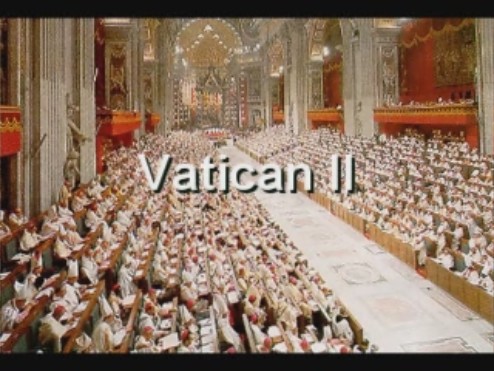 Vatican
II
Vatican
II World
Monetary Crash
World
Monetary Crash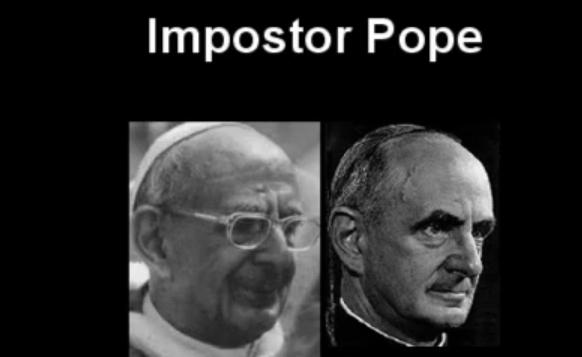 Deception
of the Century
Deception
of the Century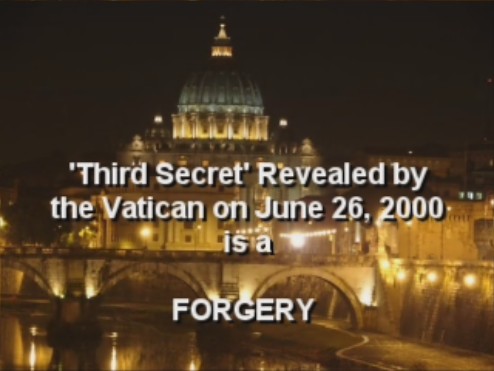 Third
Secret Fabrication
Third
Secret Fabrication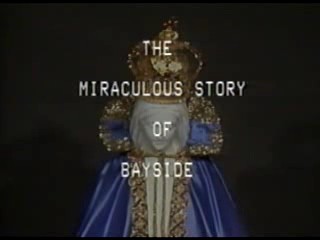 The
Miraculous Story of Bayside
The
Miraculous Story of Bayside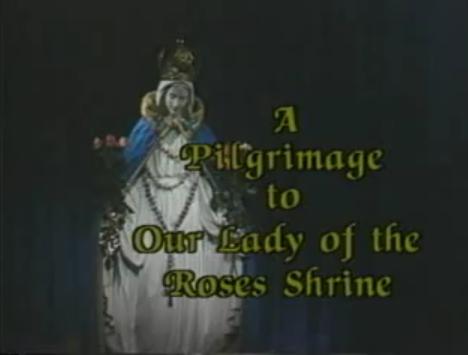 A
Pilgrimage to Our Lady of the Roses Shrine
A
Pilgrimage to Our Lady of the Roses Shrine Jacinta's
Third Secret vision: She saw Pope Paul VI
Jacinta's
Third Secret vision: She saw Pope Paul VI